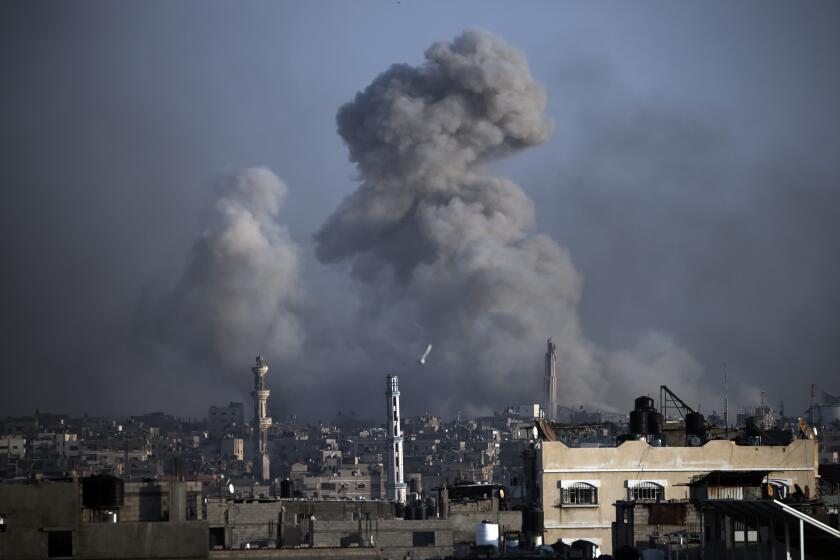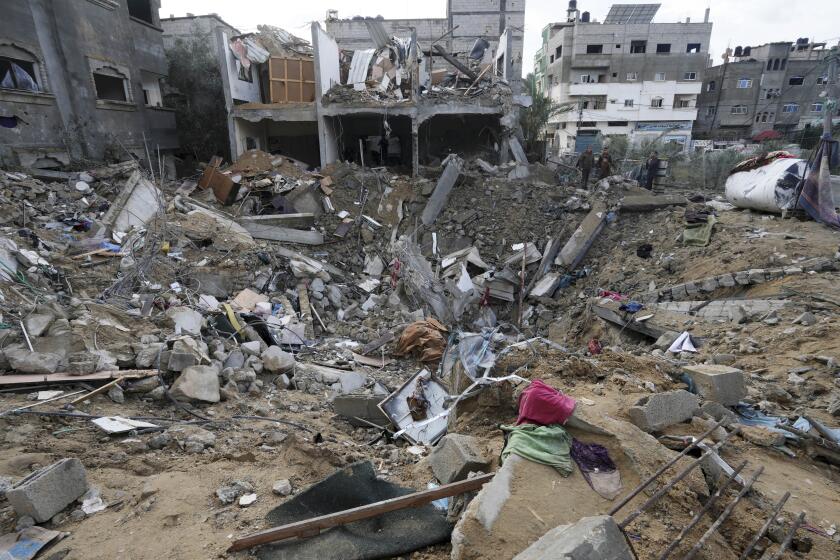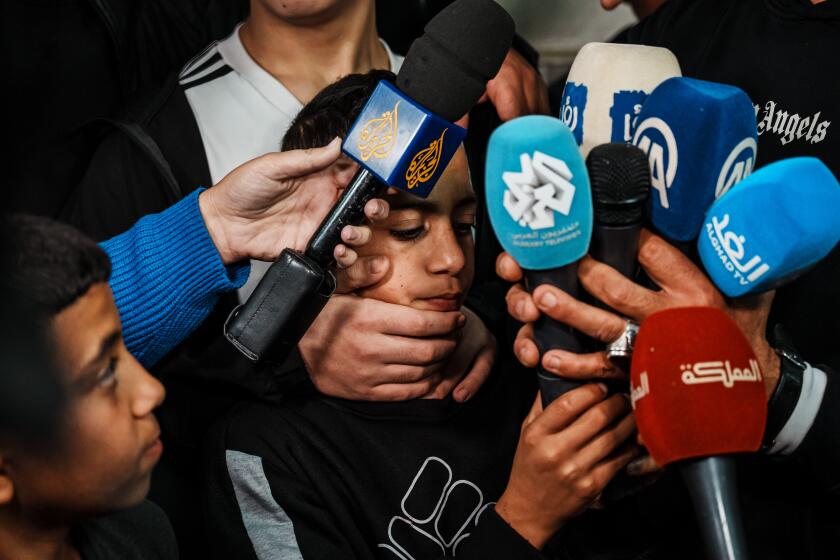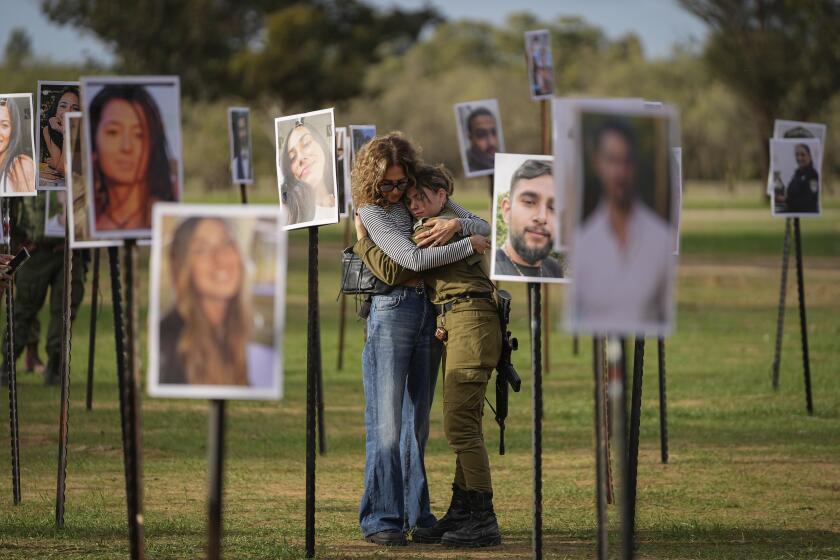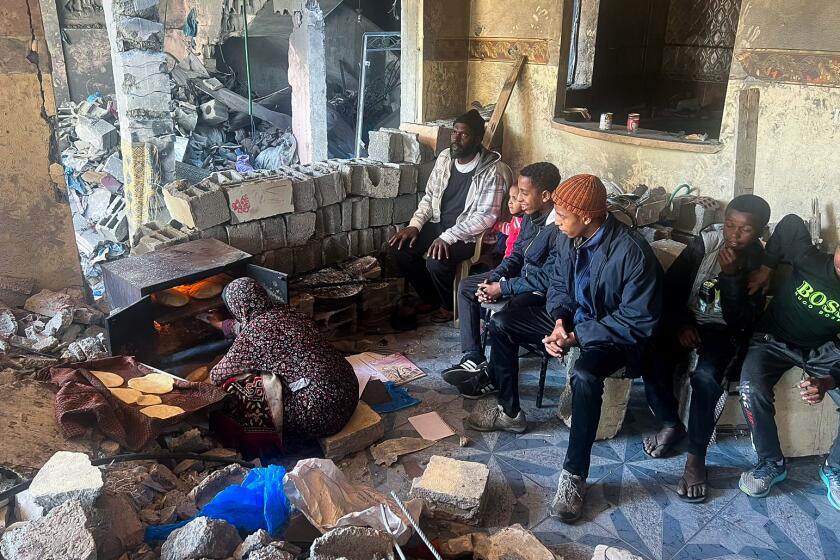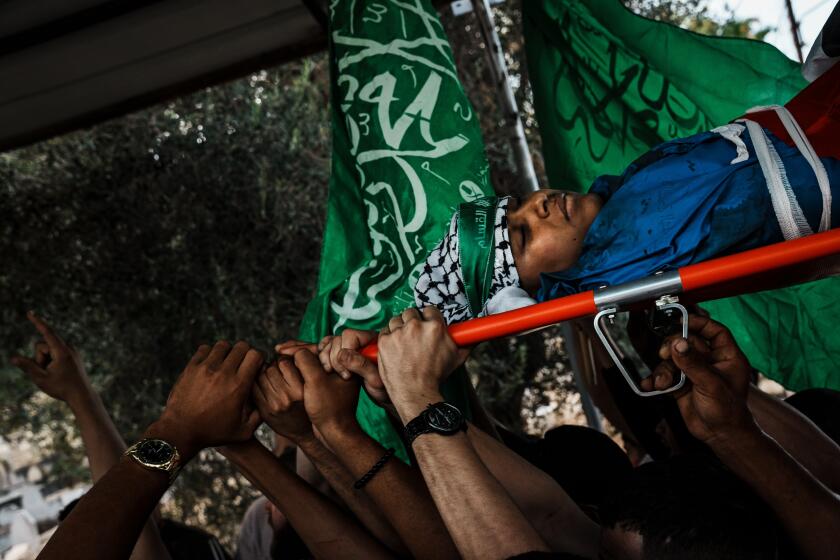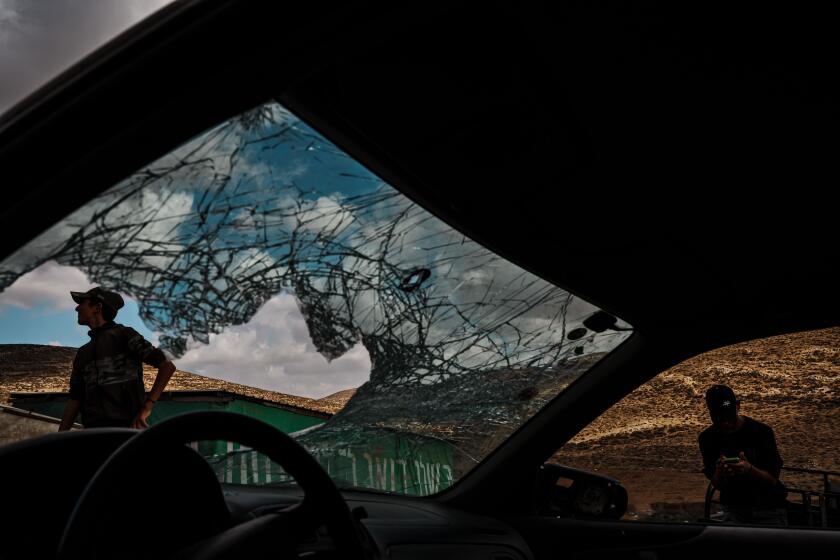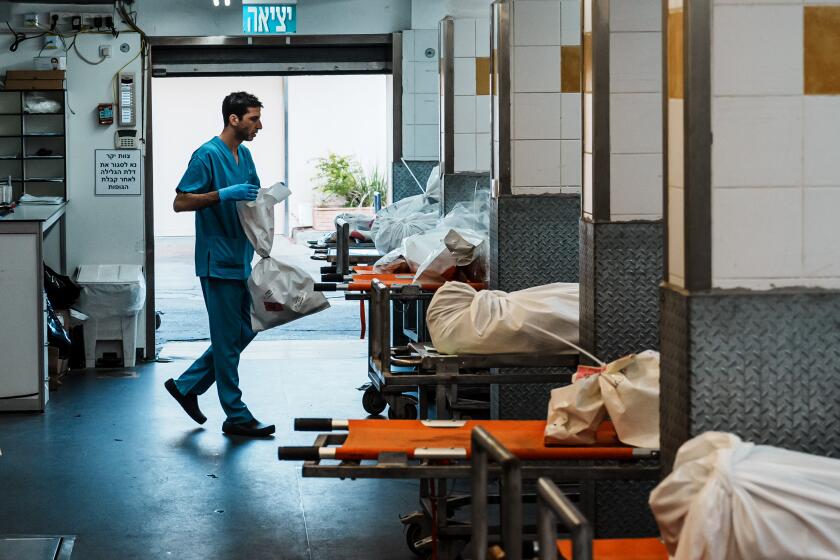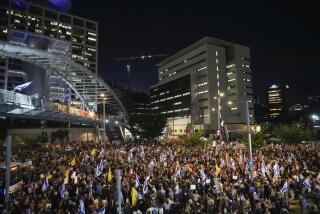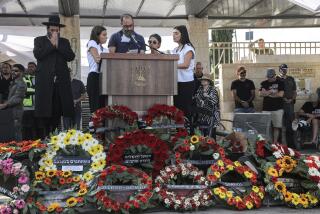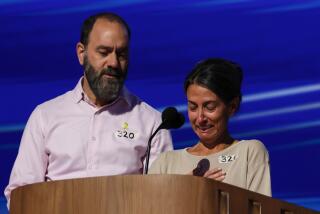Hostage families protest outside Netanyahu’s home, ramping up pressure for truce-for-hostages deal
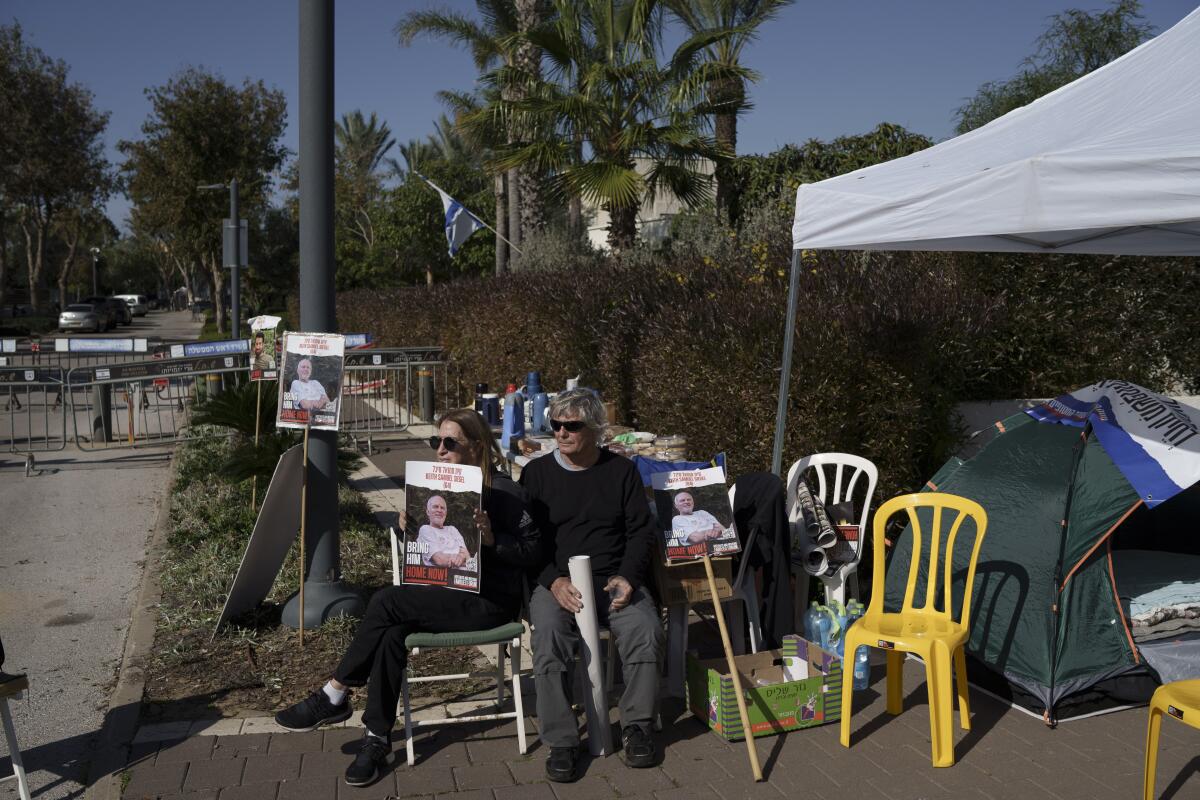
JERUSALEM — Relatives of hostages held by Hamas in Gaza protested Saturday outside the home of Israeli Prime Minister Benjamin Netanyahu, expressing frustration over his government’s seeming lack of progress in getting the more than 100 captives released as the war in Gaza drags on.
A group representing families of the hostages said they had “begged for 105 days” and now demanded that the government show leadership and take bold steps to free the hostages. A member of Israel’s wartime Cabinet has called a cease-fire the only way to secure their release, a comment that implied criticism of Israel’s current strategy.
The protest outside the prime minister’s home and the remark by former Israeli army chief Gadi Eisenkot were among signs of growing strife in Israel over the direction of the war in its fourth month. Netanyahu has said he will push for “complete victory” against Hamas but has not outlined how he would achieve it.
Critics have accused him of preventing a Cabinet-level debate about a post-war scenario for Gaza, alleging Netanyahu was stalling in hopes of avoiding conflict that could potentially break up his right-wing ruling coalition.
Benjamin Netanyahu vows to press ahead until Israel realizes a ‘decisive victory over Hamas.’ He also rejects the idea of Palestinian statehood.
Israel launched its war against Hamas following the militant group’s unprecedented Oct. 7 attack that killed about 1,200 people, mostly civilians, in Israel and saw about 250 others taken hostage from the country’s south. Health authorities in Hamas-ruled Gaza say Israel’s offensive has killed nearly 25,000 Palestinians, most of them women and children.
The offensive, one of the most destructive military campaigns in recent history, has pulverized much of the territory and displaced more than 80% of its population of 2.3 million people. An Israeli blockade that allows only a trickle of aid into Gaza has led to widespread hunger and outbreaks of disease, United Nations officials have said.
The heads of three major U.N. agencies warn that Gaza urgently needs more aid or its desperate population will suffer widespread famine and disease.
Netanyahu has insisted that the only way to secure the hostages’ return is by crushing Hamas through military means. But relatives of the remaining captives have been escalating their campaign seeking a deal for the release of their loved ones.
More than 100 hostages, mostly women and children, were released during a brief November cease-fire in exchange for the release of Palestinian women and minors imprisoned by Israel. Israel has said that more than 130 hostages remain in Gaza, but only about 100 are believed to be alive.
The recent hostage-for-prisoner swaps between Hamas and Israel have focused attention on the number of Palestinian minors imprisoned by Israel.
On Friday, the father of a 28-year-old man who has been held by Hamas since Oct. 7 began what he called a hunger strike outside Netanyahu’s home in the coastal town of Caesarea.
Eli Shtivi, who son Idan was among the people kidnapped from a music festival in southern Israel, pledged to eat only a quarter of a pita a day — to show how little food some hostages were reportedly given on some days — until the prime minister agreed to meet with him. Dozens of people joined Shtivi late Friday and were still there Saturday morning.
Eisenkot, the former army chief who is one of the five members of Israel’s wartime Cabinet, has called into question Netanyahu’s insistence that only Israel’s blistering air and ground offensive would bring the hostages home.
As the Palestinian militant group Hamas frees more hostages amid a temporary truce with Israel, a harrowing glimpse of captivity in war-torn Gaza emerges.
Eisenkot, whose son was killed in December while fighting in Gaza, said during a television interview late Thursday that claiming the captives could be freed without a deal and a cease-fire “is to spread illusions.”
The hostages “will only return alive if there is a deal, linked to a significant pause in fighting,” he said. Dramatic rescue operations are unlikely because the hostages are apparently spread out, many of them in underground tunnels, he said.
As part of its search for the hostages, Israel’s military dropped leaflets on the territory’s southernmost town of Rafah that asked people to provide information about the captives. The leaflets, with photos of dozens of hostages, carried a message suggesting benefits for anyone providing information.
“You want to return home? Please report if you identified one of them,” read the message, which also listed a phone number and a link to a website containing images and names of the hostages in Arabic.
In Gaza, residents reached by phone following the end of a seven-day communications blackout reported heavy bombardment and fighting between militants and Israeli troops Saturday morning in and around the southern city of Khan Yunis and the urban refugee camp of Jabaliya in the north.
‘I just don’t know where we’ll go.’ It’s a question Palestinians ask over and over in Gaza as Israel ramps up bombardment after Hamas truce collapsed.
Israeli warplanes and shelling hammered areas in and east of Khan Yunis, with gun battles raging overnight into the early morning in Bani Suheila, a town on the city’s outskirts, residents said. The town is one of the hotspots in Israel’s military operations in the Khan Yunis area.
Halima Abdel-Rahman, a woman displaced from northern Gaza who has sheltered in Bani Suheila since November, said Israeli airstrikes hit several buildings in the town over the last couple of days and that bombing was intense overnight into Saturday.
The fighting has forced many families to leave their homes, many of which were reduced to rubble, and Bani Suheila is largely empty, she said.
In Jabaliya, “the heavy bombing returned,” with Israeli warplanes striking buildings and open areas, local fisherman Assad Abu Radwan said.
Israel withdrew a significant number of troops from the northern half of Gaza this week after the military said it had broken up Hamas command structures there. However, Hamas gunmen continued putting up resistance in parts of northern Gaza, prompting renewed questions in Israel about the feasibility of the government’s stated goal of crushing Hamas.
In the Israeli-occupied West Bank, meanwhile, mourners gathered Saturday for the funeral of a 17-year-old American Palestinian who was shot and killed a day earlier near the city of Ramallah.
The circumstances of the shooting remained unclear Saturday.
Violence surges in the West Bank as Israel increases raids to root out militants. Palestinians say the military is using the war as an excuse to crack down.
In a statement, Israeli police said they received a report Friday regarding a “firearm discharge, ostensibly involving an off-duty law enforcement officer, a soldier and a civilian.” Police did not identify who fired the shot but described the shooting as taking place over people “purportedly engaged in rock-throwing activities” along a main highway.
Police said the incident was being investigated, including by its internal affairs department. The Israeli military did not immediately respond to a request for comment.
Friends of the teenager identified him as Tawfiq Ajaq, and said the family had returned to its home village in the West Bank from Harvey, La., about a year ago.
‘We are surrounded,’ a Palestinian in the occupied West Bank says. Israeli settlers ‘come in uniforms so you can’t tell the difference between settler and soldier.’
Asked about the shooting, U.S. national security spokesman John Kirby said officials at the White House were “seriously concerned about these reports.”
“We don’t have perfect context about exactly what happened here,” Kirby said. “Seriously concerned about it. And we’re going to be in constant touch with counterparts in the region to — to get more information.”
In recent months, the Biden administration has repeatedly expressed concern about growing volatility in the West Bank, including violence by settlers against Palestinians.
Frankel and Magdy reported from Jerusalem, Becatoros from Athens. Jon Gambrell in Jerusalem and Najib Jobain in Rafah, Gaza Strip, contributed to this report.
A forensic investigator in Tel Aviv works to reassemble remains of victims of Hamas militants, trying to understand the causes of death and the underlying cruelty.
More to Read
Sign up for Essential California
The most important California stories and recommendations in your inbox every morning.
You may occasionally receive promotional content from the Los Angeles Times.
